
Physics - Overview
Research Interests
| Planet formation and planetesimal formation | |||
| Smoothed Particle Hydrodynamics (SPH) | |||
| Simulation of solid and porous media | |||
| Collision simulations |
Current status
At the beginning of July I handed in my PhD thesis in Computational Astrophysics about "Simulation of Pre-Planetesimal Collisions with Smoothed Particle Hydrodynamics". This project is funded by the DFG Research Unit 759 "Formation of Planets" and supervised by PD Dr. Roland Speith.Description
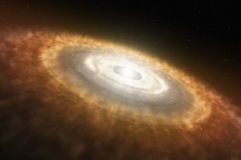
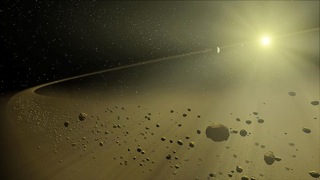
My research project addresses the pre-planetesimal stadium. The investigation of pre-planetesimal collisions by laboratory techniques is size limited. This is because experiments with fragile aggregates are infeasible beyond centimetre size in microgravity and vacuum. For this reason within the project a numerical porosity model was developed and calibrated for the simulation of pre-planetesimal dust material by means of laboratory benchmark experiments. At the end of the calibration process compaction, bouncing, and fragmentation behaviour of dust aggregates could be simulated quantitatively correct. The numerical model is now applied for an in-depth investigation of two-body pre-planetesimal collisions with respect to collision parameters such as impact velocity and impact parameter, object porosity, size ratio and rotation.
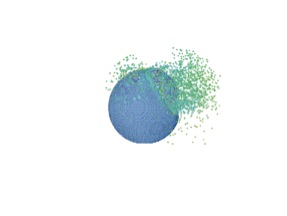
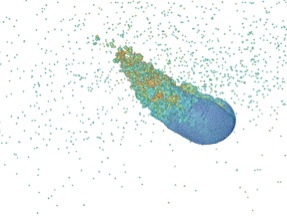
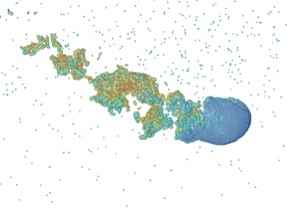
Pre-planetesimal collision sequence with impact parameter (SPH simulation).
Detailed statistics about pre-planetesimal collisions are required as input parameters for global dust coagulation models. These compute the evolution of dust aggregates in protoplanetary discs taking into account the dust-gas interaction and the resulting collision velocities. To improve the information transfer between global coagulation models and numerical as well as laboratory dust collision results the four-population model was developed within this project. This classification scheme for outcomes of pre-planetesimal collisions by mass distinguishes the largest and second largest fragment, a fragment population, whose mass distribution can be modelled by a power-law, and a sub-resolution population which accounts for the limited resolution of a numerical method. The four-population model is accurate enough to capture any combination of sticking, bouncing, and fragmentation behaviour and simple enough to be implemented in global coagulation models.
The Demoreel of the B4 project visualises the calibration process as well as the most important simulation results. Other movies can be found in the YouTube Channel of the Computational Physics Group.
Selected publications
| 2011 | R.J. Geretshauser, R. Speith, W. Kley: "Collisions of inhomogeneous pre-planetesimals. Introducing an inhomogeneity damage model", Astronomy & Astrophysics, submitted | ||
| R.J. Geretshauser, F. Meru, R. Speith, W. Kley: "The four-population model: a new classification scheme for pre-planetesimal collisions", Astronomy & Astrophysics, 531, A166 (DOI) (arXiv) | |||
| 2010 | R.J. Geretshauser, R. Speith, C. Güttler, M. Krause, J. Blum: "Numerical Simulations of Highly Porous Dust Aggregates in the Low-Velocity Collision Regime. Implementation and Calibration of a Smooth Particle Hydrodynamics Code.", Astronomy & Astrophysics, 513, A58 (DOI) |
